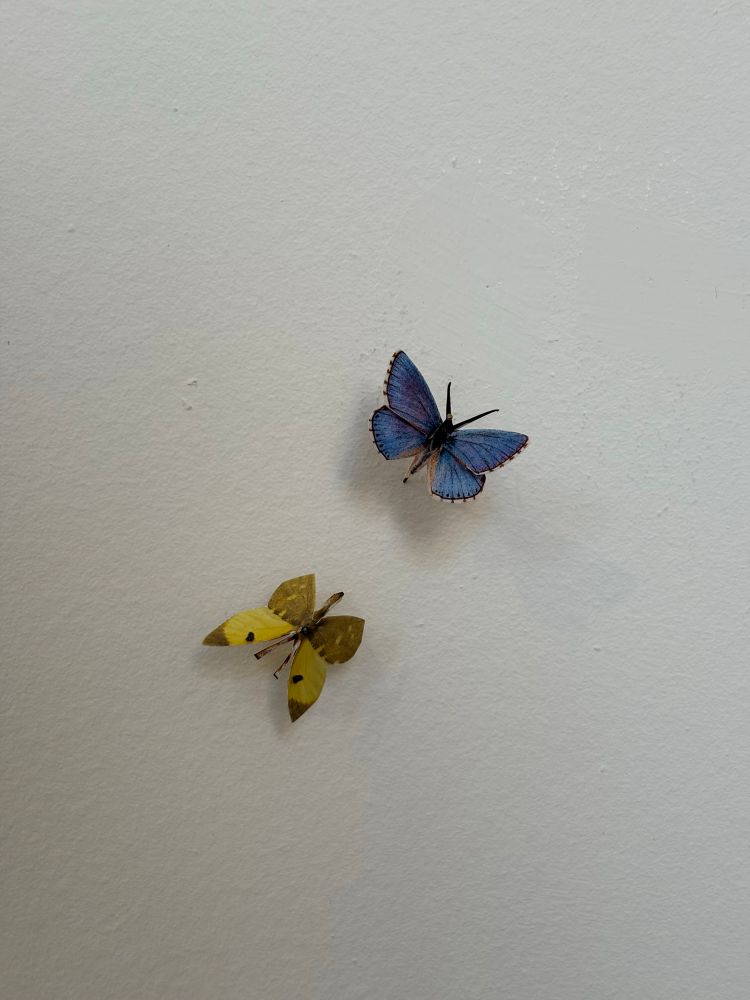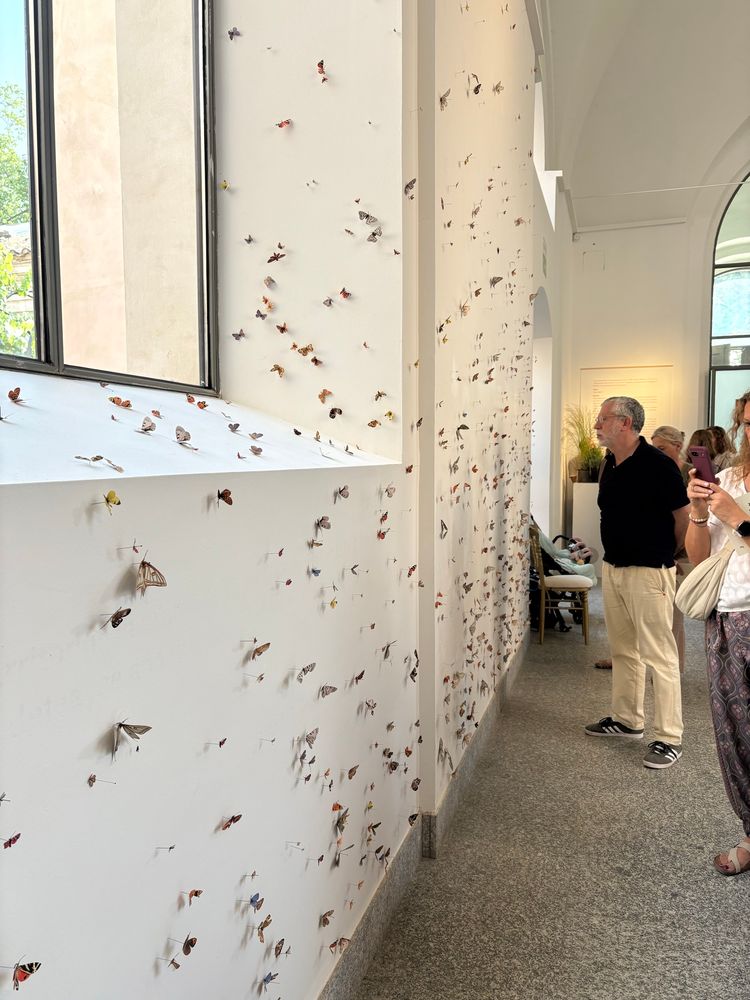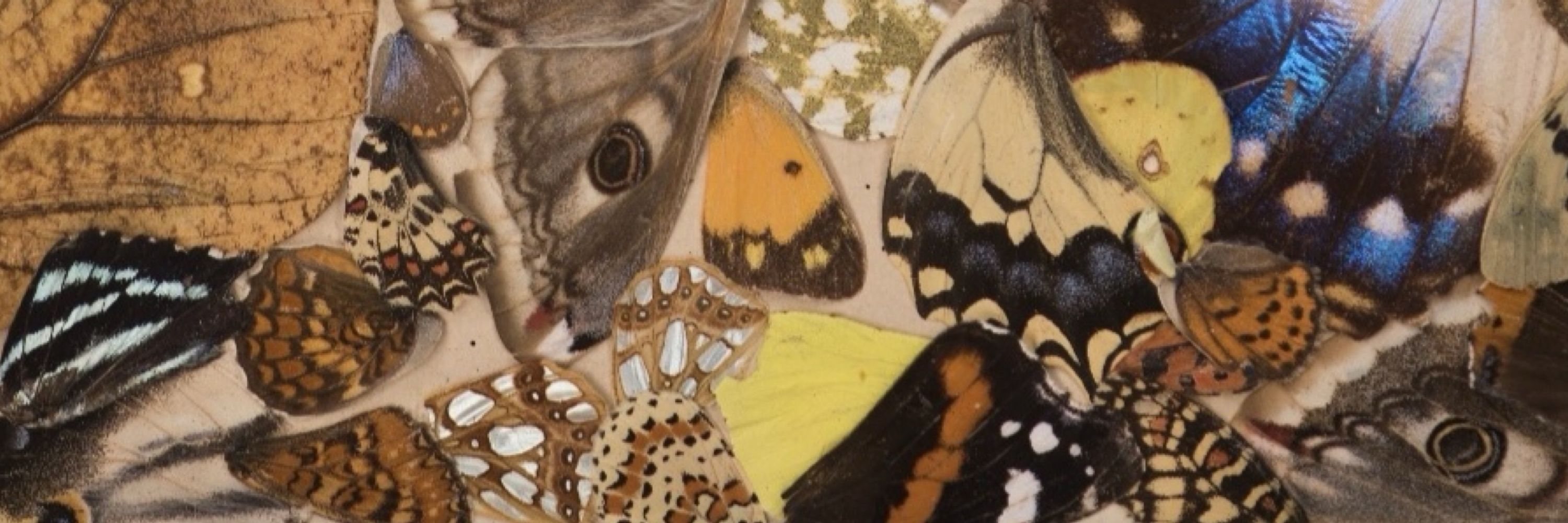
Etho-eco-evo 🍃, digitalisation 🖥️, bio-art 🎨 & biodiversity conservation 🤲🏻
Co-comm leader of @incstep.bsky.social. He/him
It's time to get to know the bee-diversity hotspot that is the Iberian Peninsula better!
#NameItToSaveIt 🇪🇸🤝🏼🇵🇹




It's time to get to know the bee-diversity hotspot that is the Iberian Peninsula better!
#NameItToSaveIt 🇪🇸🤝🏼🇵🇹
Hugo Gaspar, Piluca Álvarez and Albano Soares were all fantastic teachers 🧑🏻🏫. I'm looking forward to the intermediate courses! 🎓
Training para-taxonomists to empower EU #taxonomy and tackle the pollinator's crisis! 📉🇪🇺



– Ernest Mas, a farmer from Tarragona (Spain), on #degrowth and #regenerative agriculture 🌱 (E2, 14:26).
This series offers a breath of fresh air amid climate pessimism! 🌍
www.rtve.es/play/videos/...

– Ernest Mas, a farmer from Tarragona (Spain), on #degrowth and #regenerative agriculture 🌱 (E2, 14:26).
This series offers a breath of fresh air amid climate pessimism! 🌍
www.rtve.es/play/videos/...
I made mine this morning!

I made mine this morning!
Replicas can help to overcome limitations such as #entomophobia, and enable engagement with visually #impaired people! 🦯
All while keeping real insect specimens safe!


Replicas can help to overcome limitations such as #entomophobia, and enable engagement with visually #impaired people! 🦯
All while keeping real insect specimens safe!
We intended to provide a practical guide 🧾 on how to replicate this resource using #scAnt , an open-source device designed for 3D model reconstruction: doi.org/10.7717/peer...

We intended to provide a practical guide 🧾 on how to replicate this resource using #scAnt , an open-source device designed for 3D model reconstruction: doi.org/10.7717/peer...
nhcm.pensoft.net 📄
How can we make #entomology more engaging? Printed insect #3Dmodels can help! 🖨️ 🐜
Here we provide a guide to producing insect replicas to help overcome common issues in entomological #outreach activities! 🧩
Check it out!
doi.org/10.3897/nhcm...

nhcm.pensoft.net 📄
How can we make #entomology more engaging? Printed insect #3Dmodels can help! 🖨️ 🐜
Here we provide a guide to producing insect replicas to help overcome common issues in entomological #outreach activities! 🧩
Check it out!
doi.org/10.3897/nhcm...
We intended to provide a practical guide 🧾 on how to replicate this resource using #scAnt , an open-source device designed for 3D model reconstruction: doi.org/10.7717/peer...

We intended to provide a practical guide 🧾 on how to replicate this resource using #scAnt , an open-source device designed for 3D model reconstruction: doi.org/10.7717/peer...

Spread the word of these ant(agonistic) interactions! 🐜💥
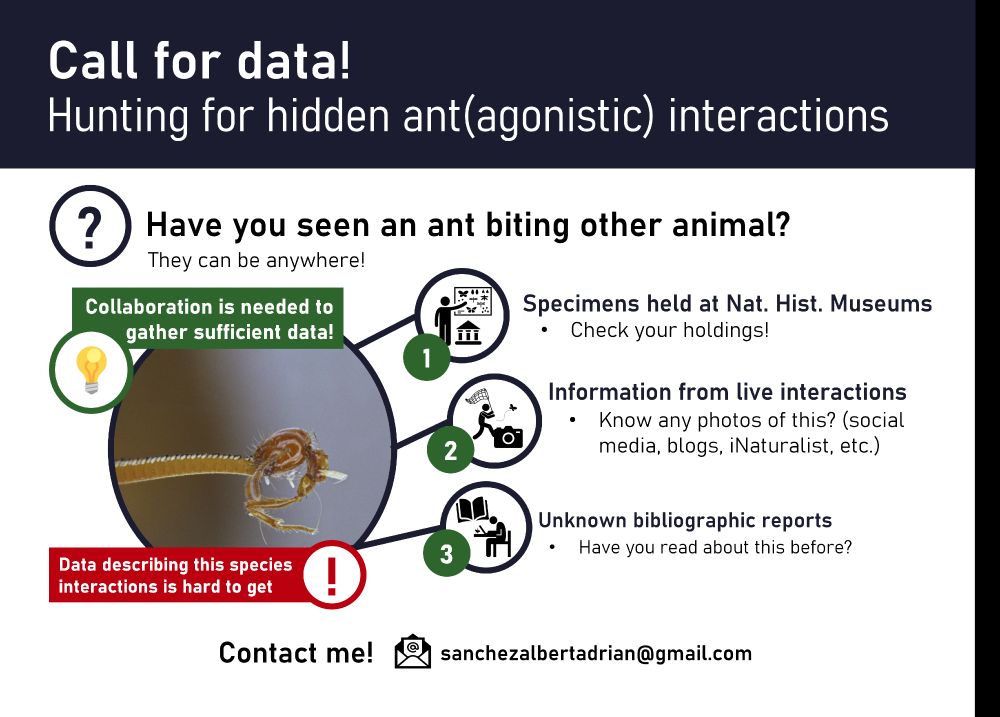
Spread the word of these ant(agonistic) interactions! 🐜💥
For example: tiger beetles (Subfam. Cicindelinae) 🪲 and bats (O. Chiroptera) 🦇, are relatively common participants in these agonistic interactions! 🔍


For example: tiger beetles (Subfam. Cicindelinae) 🪲 and bats (O. Chiroptera) 🦇, are relatively common participants in these agonistic interactions! 🔍
Their reasoning is difficult to understand and there are few clues. It's the usual business of this type of criminology!

Their reasoning is difficult to understand and there are few clues. It's the usual business of this type of criminology!
We recently reported an unusual sighting: a fire ant biting a giant hawkmoth that was collected 38 years ago! 🤯
doi.org/10.3897/BDJ....
Here's a thread on this hidden ecological relationship and where to find it in NHCs! 🏛️
Let's take a look! 🔍 1/6
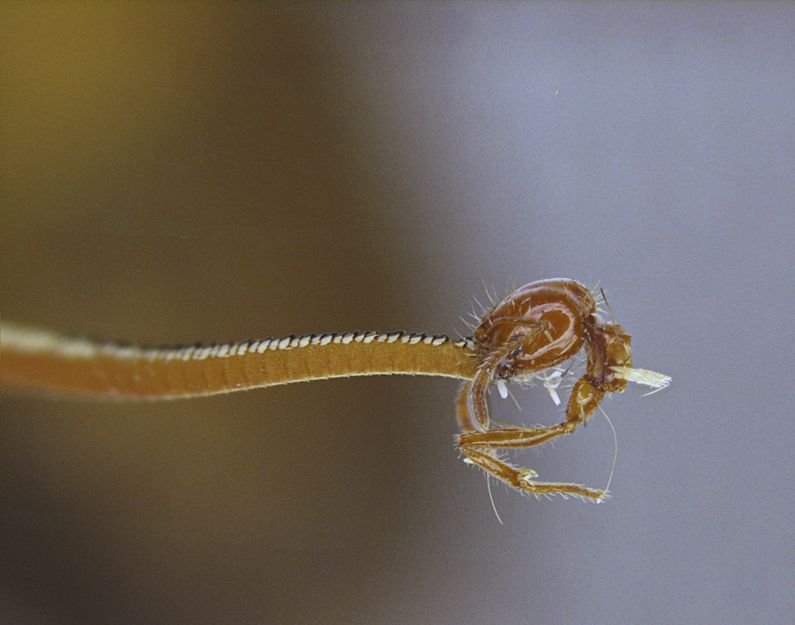
We recently reported an unusual sighting: a fire ant biting a giant hawkmoth that was collected 38 years ago! 🤯
doi.org/10.3897/BDJ....
Here's a thread on this hidden ecological relationship and where to find it in NHCs! 🏛️
Let's take a look! 🔍 1/6

It's unlikely, but I'll leave this here just in case anyone reading this doesn't know THE cite 👀: doi.org/10.5281/zeno...

It's unlikely, but I'll leave this here just in case anyone reading this doesn't know THE cite 👀: doi.org/10.5281/zeno...
Some species look a lot like wasps! 🐝
Here you can check some ID features: www.idmybee.com/anthidium.html




Some species look a lot like wasps! 🐝
Here you can check some ID features: www.idmybee.com/anthidium.html
Aunque en la foto no se aprecia mucho, tiene partes rojizas en los antenómeros y la pilosidad abdominal es más bien ocre.
Lo que no sé es si es cuestión de cierto deterioro o realmente es sexcinctus 🤔

Aunque en la foto no se aprecia mucho, tiene partes rojizas en los antenómeros y la pilosidad abdominal es más bien ocre.
Lo que no sé es si es cuestión de cierto deterioro o realmente es sexcinctus 🤔
Strongly curved basal vein (Halictidae) and terguite pilosity growing from the apical border of the terguites (Halictus)! 🐝
Tentative sp ID is scabiosae/sexcinctus. Any suggestions? 🕵🏻♂️

Strongly curved basal vein (Halictidae) and terguite pilosity growing from the apical border of the terguites (Halictus)! 🐝
Tentative sp ID is scabiosae/sexcinctus. Any suggestions? 🕵🏻♂️
Here are a couple of fantastic photos of this species, and related M. albonotata for comparison, taken by JL Romero 📸



Here are a couple of fantastic photos of this species, and related M. albonotata for comparison, taken by JL Romero 📸
Let me introduce you to Megachile pyrenaica! A polylectic species whose females build nests from mud and their own saliva (dauber bees). 🐝 🏺
More info on this genus: www.idmybee.com/megachile.html




Let me introduce you to Megachile pyrenaica! A polylectic species whose females build nests from mud and their own saliva (dauber bees). 🐝 🏺
More info on this genus: www.idmybee.com/megachile.html
Here, 3️⃣ tips to avoid mistakes:
They have 'banana-shaped' edge cells and hairy eyes (both ♀ and ♂). Drones (♂) are easier to spot if they have large 'fly eyes'!




Here, 3️⃣ tips to avoid mistakes:
They have 'banana-shaped' edge cells and hairy eyes (both ♀ and ♂). Drones (♂) are easier to spot if they have large 'fly eyes'!
The species is early and univoltine (1 gr. per year, from March to June), feeding on several angiosperm families (i.e. #polylectic) 🌸


The species is early and univoltine (1 gr. per year, from March to June), feeding on several angiosperm families (i.e. #polylectic) 🌸
Took a random box from the didactic collection (spec. without data labels) and found this #Anthophora plumipes - the only species of this genus present in Spain. 🐝🔍
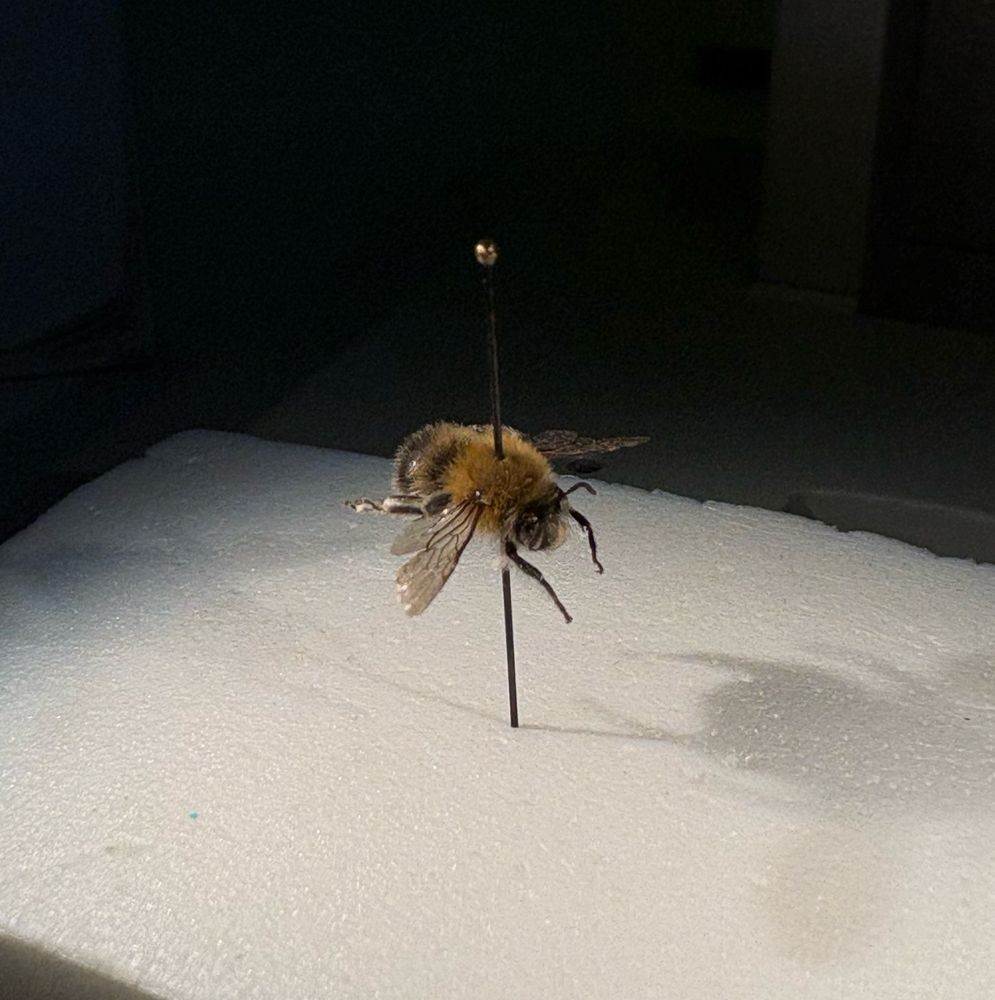

Took a random box from the didactic collection (spec. without data labels) and found this #Anthophora plumipes - the only species of this genus present in Spain. 🐝🔍
Unfortunately, #beauty ✨ is still the main criterion governing conservation and other attitudes towards lepidopterans... Luckily, sp. like this will serve as umbrellas for others! doi.org/10.1007/s105...

Unfortunately, #beauty ✨ is still the main criterion governing conservation and other attitudes towards lepidopterans... Luckily, sp. like this will serve as umbrellas for others! doi.org/10.1007/s105...


